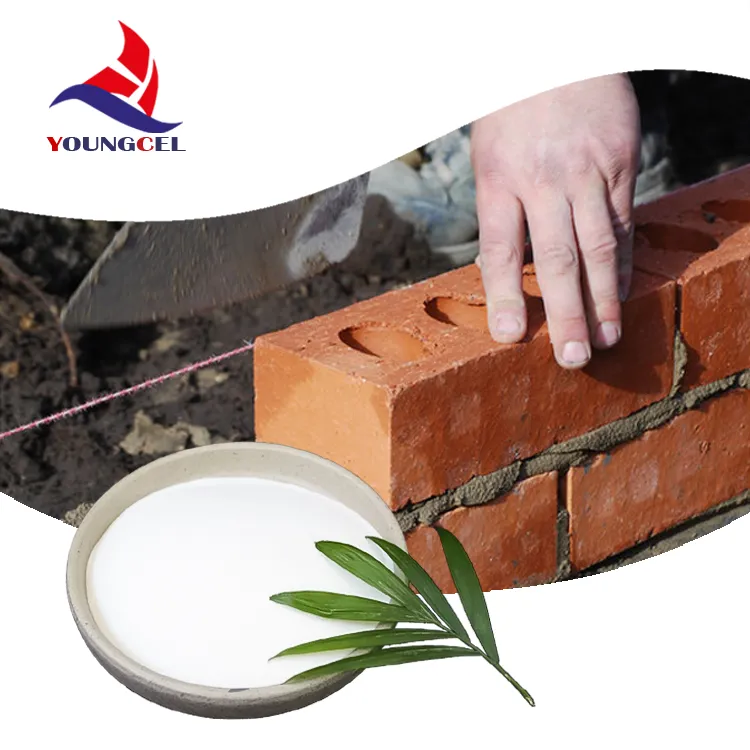The Evolution and Benefits of HPMC Tile Adhesive
In the construction industry, the demand for quality materials is ever-increasing. Among these materials, tile adhesives play a crucial role in ensuring the durability and aesthetics of tiled surfaces. One of the most popular and effective materials used today is Hydroxypropyl Methylcellulose (HPMC) tile adhesive. This article will explore the evolution, benefits, and applications of HPMC tile adhesive, highlighting its significance in modern construction practices.
What is HPMC?
HPMC is a non-ionic cellulose ether, derived from cellulose, a natural polymer found in plant cell walls. It is synthesized through the chemical modification of cellulose, producing a versatile compound with a variety of applications. In the context of tile adhesive, HPMC is primarily used due to its excellent binding properties, water retention, and adjustable viscosity, all of which contribute to enhanced performance in tile placements.
The Evolution of Tile Adhesives
Traditionally, tile installation relied on cement-based mortar systems, which, while effective, posed several challenges. These include longer setting times, susceptibility to cracking, and inconsistent bonding strength. With the advancements in chemical engineering and material science, HPMC tile adhesive emerged as an innovative solution. The introduction of HPMC not only addressed the shortcomings of conventional systems but also revolutionized the tile installation process.
Key Benefits of HPMC Tile Adhesive
1. Enhanced Workability HPMC tile adhesive offers superior workability, allowing for easy application and manipulation during the installation process. This is particularly beneficial for contractors, as it reduces labor time and enhances productivity.
2. Water Retention One of the standout features of HPMC is its excellent water-retaining capabilities. This property ensures that the adhesive maintains moisture for extended periods, which is crucial during the curing process. Adequate moisture levels help to achieve optimal adhesion between the tiles and the substrate, minimizing the risk of delamination and ensuring a strong bond.
hpmc tile adhesive

3. Adjustable Setting Times HPMC can be formulated to have varying setting times, catering to different project requirements. This flexibility enables contractors to choose the right adhesive for the specific conditions of the job site, whether it requires a quick-setting or a slower-curing product.
4. Resistance to Environmental Factors HPMC tile adhesive demonstrates remarkable resistance to various environmental conditions, including temperature fluctuations and moisture exposure. This durability extends the lifespan of tiled surfaces, making it an ideal choice for both indoor and outdoor applications.
5. Sustainability As the world moves towards more sustainable practices, HPMC tile adhesive stands out for its relatively low environmental impact. Being derived from natural cellulose, it is biodegradable and non-toxic, aligning with the growing demand for eco-friendly construction materials.
Applications of HPMC Tile Adhesive
HPMC tile adhesive is suitable for a variety of applications, making it a versatile choice for many projects. It can be used for ceramic, porcelain, natural stone, and various other types of tiles. Whether it’s for residential, commercial, or industrial tiling, HPMC delivers reliable performance across multiple surfaces, including concrete, cement boards, and gypsum.
Furthermore, its use extends beyond traditional wall and floor tiling. HPMC tile adhesive is often employed in mosaic tile installations, large-format tiles, and even in environments exposed to high moisture, such as bathrooms and swimming pools.
Conclusion
As the construction industry continues to evolve, materials like HPMC tile adhesive demonstrate the importance of innovation in ensuring quality and efficiency. With its myriad benefits, including enhanced workability, superior water retention, and environmental sustainability, HPMC tile adhesive has become a preferred choice among contractors and builders. As we look to the future, the evolution of tile adhesives will undoubtedly continue, driven by the need for improved performance and reduced environmental impact. Embracing such advancements will be key to meeting the challenges of modern construction and achieving lasting results.
-
Rdp that The Revolutionary Polymer Powder Transforming Modern Construction MaterialsNewsAug.11,2025
-
Hpmc Powder that Versatile Additive for Detergents and Personal CareNewsAug.11,2025
-
Hpmc Hydroxypropyl Methylcellulose that Essential Building Material Additive from Shijiazhuang Gaocheng YongfengNewsAug.11,2025
-
Hydroxypropyl Methyl Cellulos Hpmc that Essential for Construction ApplicationsNewsAug.11,2025
-
Mhec Powder that Revolutionizing Construction Chemistry with Cellulose Ether SolutionsNewsAug.11,2025
-
Industri Hpmc that The Global Backbone of Advanced ConstructionNewsAug.11,2025




